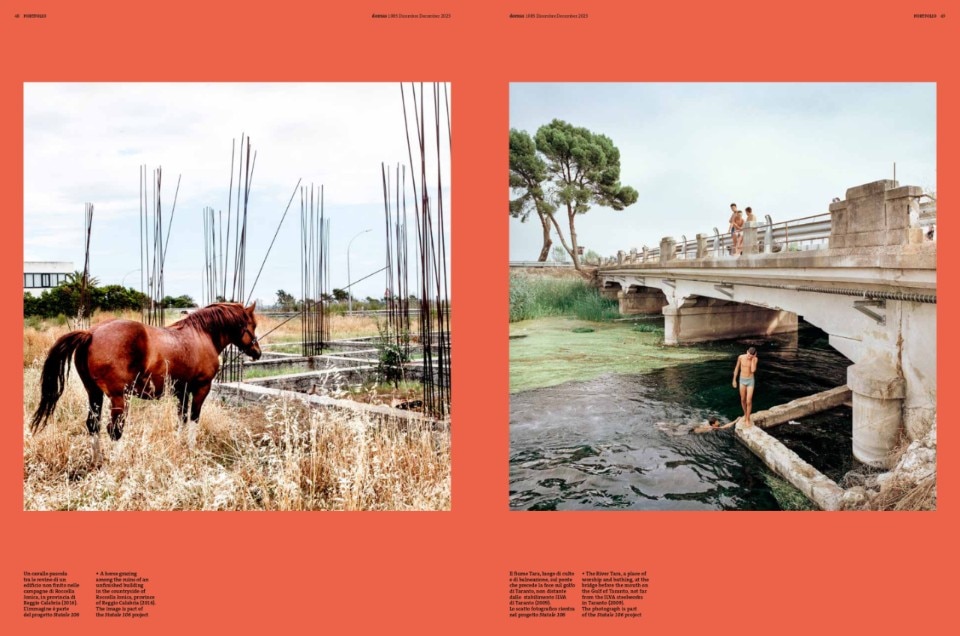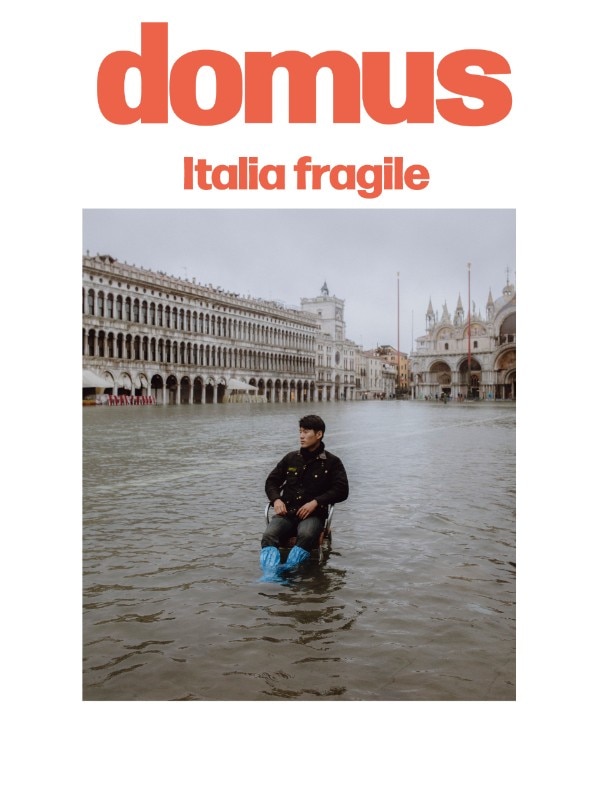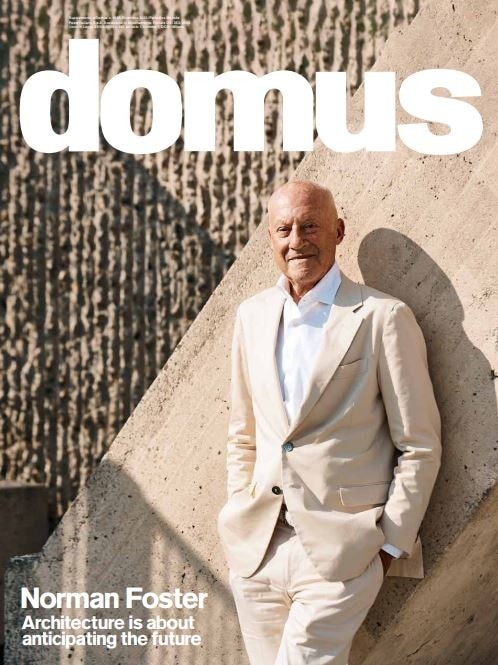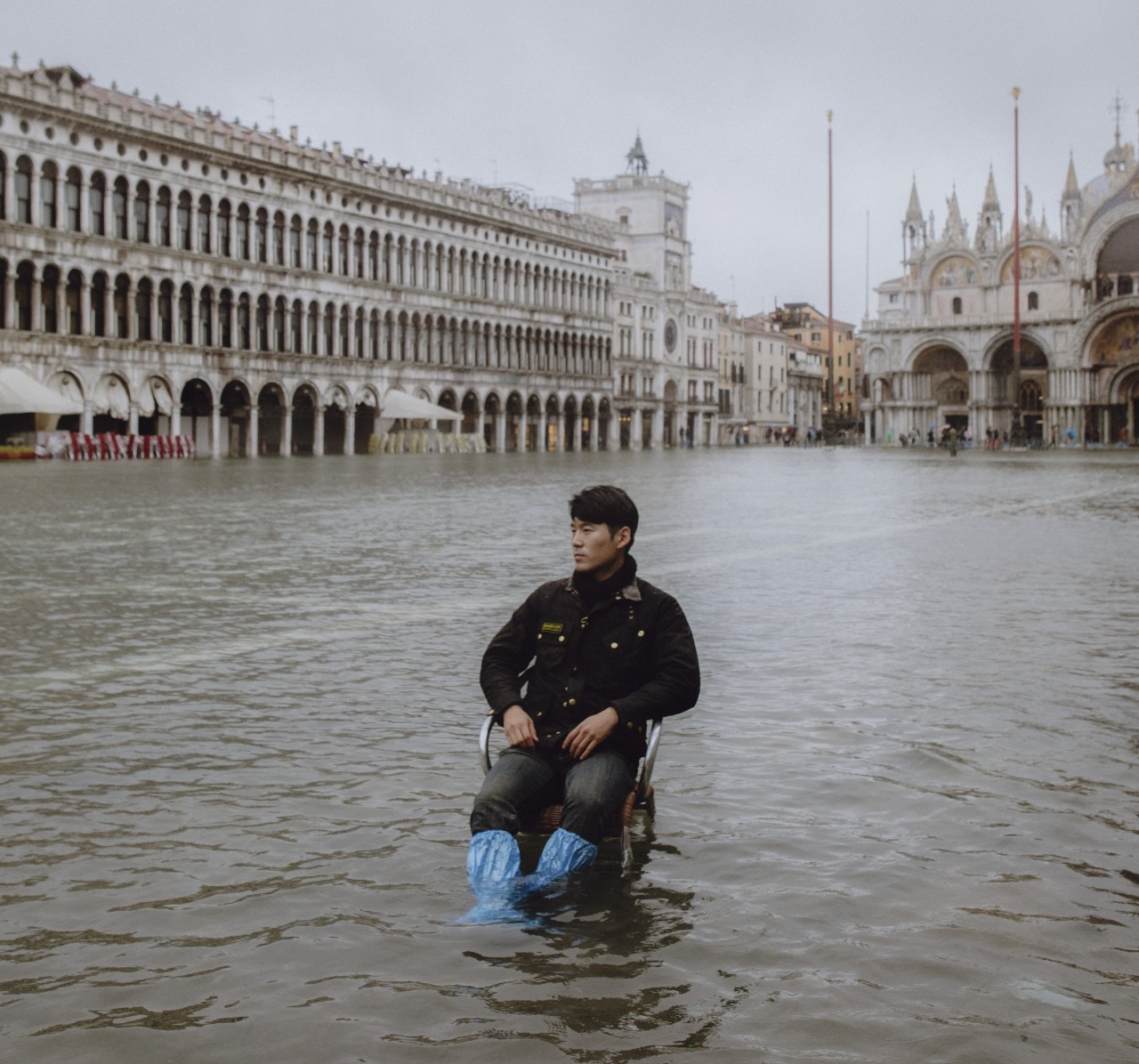Domus 1085 is a special issue, curated by the Domus editorial staff, continuing the journey initiated in 2017 to narrate Italy. This seventh stage is about the home as a project – not only of architecture and design but also of community. This is because the home is, indeed, a universal human right, as well as the lens that allows us to understand a series of phenomena affecting the country. From touristification to the financialization of the market, from the depletion of the territory to the relationship with the vulnerabilities of those affected by disability, migrants, and those in a prison regime.
In the editorial of Domus 1085, Editorial Director Walter Mariotti introduces the theme of the issue by highlighting an overview of the condition in which Italy finds itself today, traversing culture, climate change, and the market, and analyzing their impact on the sectors our magazine has covered since 1928.
Following this, Jacopo Tondelli and Alberto Mingardi recount Italy starting from Milan and the ongoing gentrification in the Lombard capital.
Luca Garofalo’s essay takes us on a journey through architecture in post-war public housing and the city-buildings of the 1970s and 1980s, complemented by a photographic series by Giovanna Silva. The article stands as a reflection on the housing models developed in those years and their relevance today.
Federica Verona analyzes the housing situation in Milan, focusing on phenomena causing the expulsion of lower and middle classes from the city – from gentrification to short-term rentals. In this context, the financialization of the post-Expo and post-pandemic city has determined the urgent need to develop an alternative urban project capable of responding to the needs of both ‘the last and the first,’ through a vision and policies committed to housing for all.

The projects presented all revolve around housing in relation to different types of fragility. Featured in these pages are the 5Square residences by Barreca & La Varra in Milan – presented by Alessandro Benetti – and the Sila Social Housing by Corvino + Multari in San Giovanni in Fiore (Cosenza) – presented by Maria Lorenza Crupi. Giulia Ricci narrates SON Cascina San Carlo, by B22 Stefano Tropea with Carlo Venegoni, a cluster of social services that includes residential units. Developed from the ‘After Us’ law, the intervention repurposes an old farmhouse in the northeast outskirts of Milan and the site’s ecosystem, creating a connection with the neighborhood community through a pavilion for public events and spaces for two associations. Similarly, the Santa Barbara nursing home by Pedevilla Architects – as emphasized by the text by Giovanni Comoglio – repurposes an old building in the center of the South Tyrolean municipality of San Leonardo in Passiria, allowing elderly residents to be an integral part of the public life of the town.
Elena Granata’s essay provides an overview of the issue of student housing during the years of protests against the high cost of rent, expressed through the tent movement in the streets. Against the logic of single-function buildings exploited by certain speculation, students are not only asking for affordable prices but are formulating a more complex demand for a ‘public city,’ a model of widespread student housing yet to be invented.
The photographic portfolio is by Filippo Romano. Through his lens, Romano has depicted social anxieties and the effects of environmental crises, showing how these intersect with the Italian territory and its inhabitants. From the scars left by the Vaia storm in the Alps to housing issues in cities, to construction projects left unfinished in Calabria, to the Tara River, a place of worship and bathing not far from the ILVA plant in Taranto, the portfolio is a journey that tells various Italian stories from north to south.
Emanuele Coccia writes in his op-ed that ‘Houses are the most enduring garments of our moral customs.’ The philosopher identifies five interconnected forms of romanticism related to the domestic dimension. They belong to a time that no longer exists but still permeates our way of looking at living.

In the section dedicated to the territory, Manuel Orazi describes the processes that follow natural disasters such as earthquakes in Italy. Starting from responses to housing emergencies, Orazi describes how, in several cases, ‘little houses’ – emergency housing solutions known as SAE – have been used. Orazi highlights the absence of a unified intervention model, making the contribution of private individuals in the creation of community services aimed at bringing together vulnerable communities even more significant. Marianna Guernieri’s article follows, expanding on the theme of the design of emergency housing units and the lack of a systemic contribution from architects.
Elena Sommariva focuses on the structural overcrowding of prison facilities and the work carried out by curators and internationally renowned artists in the Calogero Di Bona Ucciardone prison in Palermo. The workshops have had the effect of humanizing the spaces, creating unprecedented connections between inmates, socio-health workers, and guards.
On the other hand, Paola Carimati tells the story of migrations in Italy, at the center of the Mediterranean. Starting with an interview with the former mayor of Riace, Mimmo Lucano, the journalist reviews the models and processes in place on the territory to welcome migrants, highlighting the need to rethink reception and integration in the country.
The issue concludes with the cover story detailing the photographic and editorial project Era Mare by Matteo de Mayda, Bruno (Andrea Codolo and Giacomo Covacich), and Francesca Seravalle. The proceeds from the copies sold of the book, focused on the devastating effects of the high water in Venice in 2019, were donated to the cultural association Do.Ve, which helped the Dorsoduro district rise again after the night of November 12.

The pages of the Diario, dedicated to current affairs as usual, open with the Italian Journey section by Walter Mariotti – the editorial director of Domus. He makes a stop in the industrial city of Crespi d’Adda in the province of Bergamo. Francesco Franchi, in the Graphics section, tells the story of the new covers for the Oscar Mondadori series for the works of Italo Calvino, on the occasion of the hundredth anniversary of his birth. Loredana Mascheroni discusses Konstantin Grcic’s latest project for Alpi, while Silvana Annicchiarico, in the Talents section, introduces the designer Jonathan Bocca. Cristina Moro, in Mnemosine, presents the reissue of Zanotta’s folding armchair designed in 1968 by architects Jonathan De Pas, Donato D’Urbino, and Paolo Lomazzi for Bonacina. In the Points of View section, Giulia Ricci engages in a dialogue with architects Winy Maas and Lawrence Scarpa, co-founders of MVRDV (Netherlands) and Brooks + Scarpa (USA), on the redevelopment of buildings with symbolic value and a complex political history.
The December issue concludes the year of Steven Holl and Toshiko Mori and presents Norman Foster as the guest editor for 2024. With the monograph, Domus tells the story of the British master through his experiences, passions, and some key projects of his work. However, it is with the manifesto that Foster personally explains the intentions that will guide his choices for the magazine in 2024, a year that will be dedicated to the future.
Opening image: Tourist in Piazza San Marco, Venice, 2019. Photo © Matteo de Mayda

























